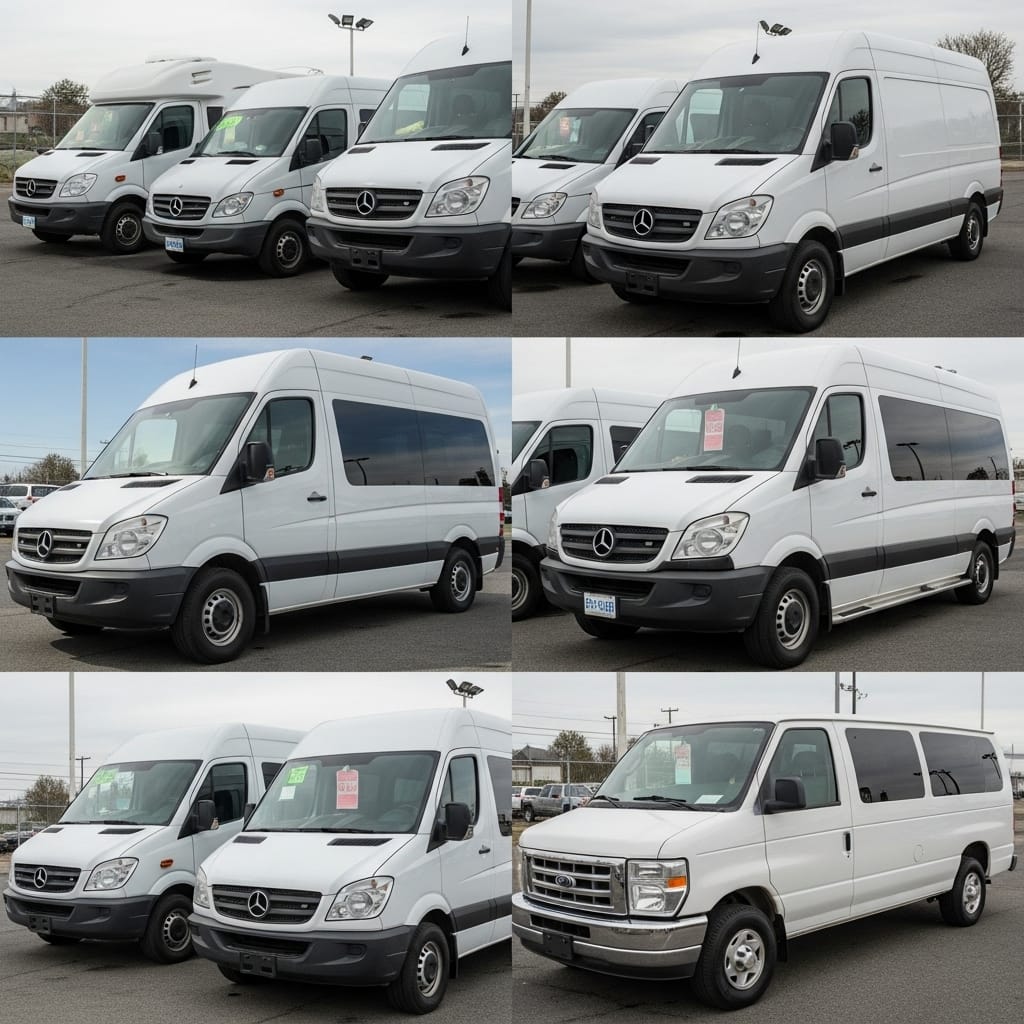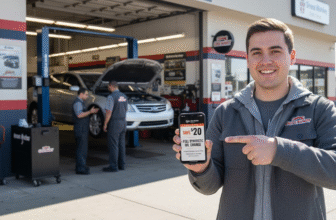
The Ultimate Guide to Finding the Perfect Van for Sale: From Workhorse to Wanderlust
There’s a certain magic to a van. It’s more than just a vehicle; it’s a vessel of potential. For some, it’s a mobile workshop, a reliable partner in a bustling business, its cavernous interior swallowing tools, packages, and materials with ease. For others, it’s a chariot of freedom, a blank canvas ready to be transformed into a cozy home on wheels, promising adventure on the open road and sunrises in new, breathtaking locations. And for many, it’s the ultimate people-mover, the unsung hero of large families, sports teams, and community groups. Whatever your dream or need, the journey often begins with a simple search: “vans for sale.”
The American landscape of vans is more diverse and exciting than ever before. Gone are the days of limited, purely utilitarian options. Today’s market is brimming with technologically advanced, surprisingly comfortable, and incredibly versatile models designed to fit a vast spectrum of lifestyles and budgets. Navigating this world can feel daunting, but with the right knowledge, you can find the perfect van that will serve you faithfully for years to come. This comprehensive guide will walk you through every step of the process, from understanding the different types of vans to knowing exactly what to look for during a test drive. Get ready to unlock the potential and find the van that’s waiting for you.
Why the Humble Van is Your Ticket to Freedom and Functionality
The surge in van popularity isn’t a fleeting trend; it’s a response to a collective desire for flexibility and utility. In a world that often feels restrictive, a van offers a tangible sense of possibility. For the entrepreneur, it’s a business on wheels. Plumbers, electricians, florists, and mobile pet groomers have long known the value of a well-equipped cargo van. It’s their office, their storage unit, and their transportation, all rolled into one efficient package.

On the other side of the coin is the explosive growth of “van life.” More than just a hashtag on social media, it represents a fundamental shift in how people view living and travel. It’s about minimalism, experiences over possessions, and the ability to wake up to a mountain vista one day and a coastal breeze the next. This movement has pushed manufacturers and custom outfitters to innovate, creating vans that are as comfortable and functional as many small apartments. But you don’t need to sell your house to appreciate a van’s recreational benefits. It can be the ultimate weekend warrior vehicle, perfect for hauling mountain bikes, kayaks, or camping gear, and providing a comfortable place to crash after a long day of adventure.
Decoding the Lineup: Choosing the Right Type of Van for You
Before you can dive into specific makes and models, you need to identify the fundamental type of van that aligns with your goals. Each category is designed with a primary purpose in mind, though the lines can often be blurred with customization.
The Workhorse: Cargo Vans
This is the van in its purest form. A cargo van features a front cabin, typically with two or three seats, and a vast, empty space behind it. The focus here is on utility. Key features include high payload capacities (the amount of weight it can carry), durable flooring, and multiple tie-down points. The windows are often replaced with metal panels for security. These vans are the backbone of countless industries, from last-mile delivery services to skilled trades. When looking at a cargo van, the primary considerations are cubic feet of cargo space, the ease of access through side and rear doors, and its ability to be “upfitted” with shelves, racks, and other specialized equipment.
The People Mover: Passenger Vans
As the name suggests, passenger vans are built to transport people. They come in various configurations, capable of seating anywhere from 8 to 15 individuals. Safety is a paramount concern in this category, with modern passenger vans featuring multiple airbags, stability control systems, and often advanced driver-assistance features. They are the go-to choice for large families, churches, schools, and airport shuttle services. While they excel at moving groups, their seats can often be removed, offering a huge amount of interior space that can be used for hauling cargo or for a temporary camper setup, making them a surprisingly versatile option.
The Blank Canvas: Conversion Vans
Conversion vans occupy a unique space between utility and luxury. Historically, these were standard cargo or passenger vans sent to a third-party company to be “converted.” The result was often a vehicle with plush captain’s chairs, thick carpeting, wood trim, and entertainment systems. While their popularity waned for a time, they are seeing a resurgence as a comfortable and stylish platform for travel and touring. Today, the term is also used more broadly to describe a van, often a used one, that is purchased with the intent of a DIY camper conversion. They offer a “blank canvas” for those who want to build their dream layout from scratch.
The Home on Wheels: Camper Vans (Class B RVs)
Camper vans, also known as Class B motorhomes, are vans that have been professionally and purpose-built for living and travel. These are not DIY projects but fully-realized recreational vehicles sold by established manufacturers. They cleverly pack an incredible amount of functionality into a compact footprint, often including a dedicated sleeping area, a kitchenette (galley) with a sink and stove, a small refrigerator, and sometimes even a “wet bath” with a toilet and shower. These vehicles offer the ultimate in convenience, allowing you to hit the road immediately with all the comforts of home, but they also command the highest price tag.
Meet the Titans: A Guide to the Most Popular Vans on the US Market
In the United States, the full-size van market is dominated by a few key players. Each has its own distinct personality, strengths, and weaknesses. Understanding these differences is crucial to making an informed decision.
Ford Transit: The Adaptable All-Rounder
Since its introduction to the US market, the Ford Transit has become a dominant force, and for good reason. Its main selling point is variety. The Transit is available in multiple lengths and three different roof heights (low, medium, and high), allowing buyers to pick the exact volume they need. It also offers a choice of powerful and relatively efficient engines, including the popular EcoBoost V6, and is available in all-wheel drive (AWD), a huge plus for those in snowy climates or who venture off-pavement. It’s known for its comfortable, car-like driving dynamics, making it less intimidating to pilot than some of its rivals.
Mercedes-Benz Sprinter: The Premium Powerhouse
The Sprinter is often seen as the premium choice in the van world. It carries the prestige of the Mercedes-Benz badge and backs it up with robust engineering, a high-quality interior, and advanced technology. Sprinters are famous for their durable and torque-rich diesel engines, which can log incredible mileage when properly maintained. They are a favorite in the high-end camper van conversion market, partly due to the availability of a true 4×4 system (not just AWD), making them incredibly capable off-road. While they have a higher initial purchase price and potentially more expensive maintenance costs, their reputation for longevity and capability is well-earned.
Ram ProMaster: The Front-Wheel-Drive Contender
The Ram ProMaster stands out from the crowd with its front-wheel-drive (FWD) layout. This design choice has significant practical advantages. With no driveshaft running to the rear wheels, the ProMaster boasts the lowest load floor height in its class, making it incredibly easy to get in and out of and to load heavy items. The FWD configuration also gives it a surprisingly tight turning circle and predictable handling, especially in adverse weather. Its wide, boxy interior is a dream for camper conversions, as the walls are more vertical than its competitors. Powered by the proven Pentastar V6 engine, it offers a compelling and practical package, though it lacks an AWD or 4×4 option.
The Old Guard: Chevrolet Express & GMC Savana
The Chevy Express and its GMC Savana twin are the veterans of the van world. They retain a traditional, body-on-frame construction, similar to a pickup truck. This old-school design is incredibly tough and reliable. They are powered by brawny, no-nonsense V8 engines that are simple to work on and for which parts are cheap and plentiful. While they lack the interior height and sophisticated driving manners of their European-style competitors, they are workhorses through and through. For buyers who prioritize simple, proven mechanicals and sheer towing power over interior ergonomics and fuel economy, the Express and Savana remain a relevant and cost-effective choice.
New vs. Pre-Owned: A High-Stakes Decision
One of the biggest forks in the road is the choice between a brand-new van and a pre-owned one. There are significant advantages to both paths, and the right choice depends entirely on your budget and risk tolerance.
The Case for a Brand-New Van
- Warranty and Peace of Mind: This is perhaps the biggest benefit. A new van comes with a comprehensive manufacturer’s warranty, meaning any unexpected mechanical issues in the first few years are covered.
- Latest Technology and Safety Features: You’ll get the most up-to-date infotainment systems, driver-assistance features like blind-spot monitoring and automatic emergency braking, and the most efficient engines.
- Pristine Condition and Custom Orders: It’s a clean slate. There are no mysterious stains, no hidden rust, and no questionable modifications. You can often order a van to your exact specifications from the factory.
- The Downside: Depreciation: Like any new vehicle, a van will lose a significant portion of its value in the first few years. You are paying a premium for that “new car smell.”
The Appeal of a Used Van
- Significant Cost Savings: The most obvious advantage. By letting the first owner absorb the initial depreciation, you can save thousands, or even tens of thousands, of dollars.
- Proven Reliability: By choosing a model that has been around for a few years, you can research its long-term reliability and common issues, avoiding models known for problems.
- More Options for Your Budget: Your money goes further. For the price of a base-model new van, you might be able to afford a well-equipped, higher-trim used model with more features.
- The Risks: Hidden Problems and Maintenance: The van comes with a history. It could have been poorly maintained, involved in an unreported accident, or have developing mechanical issues. A thorough inspection is non-negotiable.
Your Pre-Purchase Gauntlet: The Ultimate Van Inspection Checklist
Whether new or used, a thorough inspection is critical. For a used van, it’s your only defense against buying a lemon. Approach it methodically.
Step 1: The Exterior Walk-Around
Look for inconsistent panel gaps, which can indicate a past accident. Check for any signs of rust, paying close attention to the wheel wells, rocker panels, and the undercarriage. For high-roof vans, check the roof for any damage or sealant cracks. Examine the tires for even wear and sufficient tread. Uneven wear can point to alignment or suspension problems.
Step 2: The Interior Deep Dive
This is where the van’s history is written. For cargo vans, look for excessive dents and scrapes that suggest a hard life. In passenger vans, check the condition of all the seats and seatbelts. In any van, press down on the floor to feel for soft spots, which could indicate a rotted subfloor from water leaks. Sniff for musty or moldy smells. Test every single button, switch, and knob. Turn on the heat and the A/C. Check all the doors—side and rear—to ensure they open, close, and lock smoothly.
Step 3: The Mechanical Audit
Always start the van from cold. A cold engine is more likely to reveal issues like startup rattles or smoke. Listen for any knocking, ticking, or grinding sounds from the engine bay. Pull the oil dipstick; the oil should be brown or black, but not milky (which could indicate a head gasket issue) or gritty. Check the transmission fluid if possible; it should be red or pink and not smell burnt. During the test drive, find a safe, empty area to test the brakes firmly. The van should stop straight without pulling. Pay attention to how the transmission shifts; it should be smooth and decisive, not jerky or hesitant.
Step 4: The Paper Trail
Ask the seller for service records. A thick folder of receipts is a great sign of a well-maintained vehicle. Most importantly, always invest in a vehicle history report from a service like CarFax or AutoCheck. This will reveal the van’s reported accident history, title issues (like a salvage or flood title), and past odometer readings.
Beyond the Driveway: Embracing the Van Lifestyle
Finding the right van for sale is just the beginning of the adventure. It’s the moment your dream gains four wheels and an engine. It’s the start of a journey, whether that journey is building a successful business, exploring the country’s national parks, or simply having the most capable vehicle on the block. The van community is a welcoming one, full of innovators, entrepreneurs, and explorers who are happy to share their knowledge and experiences. Take your time in the buying process, do your homework, and trust your gut. The perfect van is out there, waiting to become a part of your story.







